June 2004
Monthly Archive
Wed 30 Jun 2004
Posted by glenn under
Government ,
News
Xeni Jardin,BoingBoing, Reports:
Biggest story ever broken by a blog? It appears that blogger/BBC News correspondent/landmine survivor Stuart Hughes was first to break news of the early handover of authority in Iraq today, on his weblog. Link. Hughes was in Istanbul at the Bush/Blair press conference after that, and filed live text and audblog coverage here: Link
(more…)
Mon 28 Jun 2004
Posted by glenn under
News

This U.S. Geological Survey map shows the epicenter about 70 miles west of Chicago.
AP via CNN
CHICAGO, Illinois (AP) — A brief earthquake struck the Midwest early Monday, rattling windows and awakening sleeping residents from Wisconsin and south to Missouri and from southwest Michigan and Indiana west to Iowa.
No injuries were reported from the quake, which occurred about 2:11 a.m. ET.
(more…)
Wed 23 Jun 2004
Posted by glenn under
Internet ,
Science
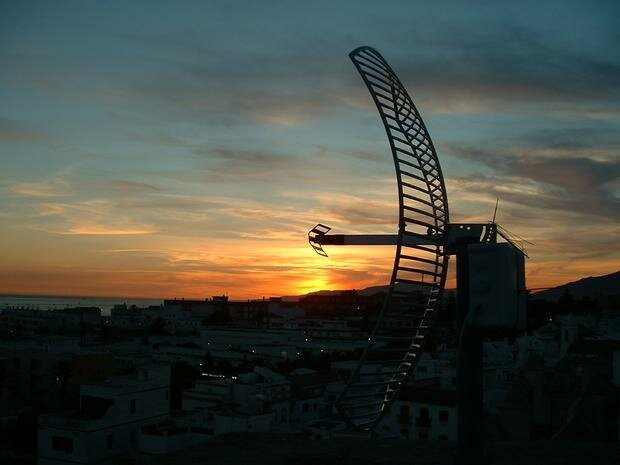
©Psand 2004.
This document outlines the physical and technical issues involved in establishing a WLAN connection capable of real file transfer speeds up to 5.5mb/s from Tarifa in Spain to Tangers in Morocco. Connecting two continents, using the free 802.11 standard and free software.
(more…)
Wed 23 Jun 2004
Posted by glenn under
Science ,
Art
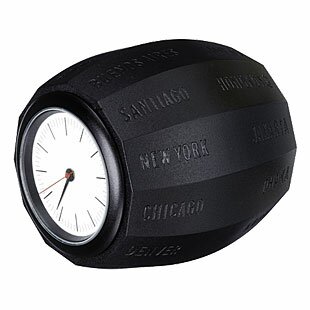
Name: World Time clock
Designer: Charlotte Van Der Waals, 2001
Manufacturer: Charlotte Van Der Waals, The Netherlands
Materials: Plastic, steel, glass
Dimensions: 2″ long 2″ dia
Price: $70.00
Store: Moss
Simplicity + Functionality - All you need to do is turn this twelve sided clock to change the time zones for each of the cities labeled. The label denotes the 12 o’clock marker.
Wrist Fashion via BoingBoing
Tue 22 Jun 2004
Posted by glenn under
Humor ,
Culture
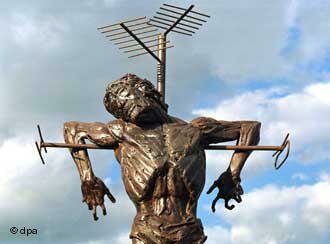
Rafael Heiling (dre) via BoingBoing
European companies are finding ingenious ways to disguise ugly, but necessary, mobile phone antenna masts. Customers can pick everything from trees to crucifixes.
(more…)
Tue 22 Jun 2004
Posted by glenn under
Science

WorldChanging reports:
While this isn’t new, I just learned about it today, and thought I’d pass it along. Cornell University, since 2000, has used a system called “Lake Source Cooling” to cool buildings during the warm Ithaca summers. The technique is fairly simple, and works extremely well. By no longer using traditional air conditioning, the university was able to reduce its cooling-related power consumption by 80-90%, and the campus’ overall demand by 10%; in 2001, that meant a reduction in CO2 emissions of over 21 million tons.
Because the old air conditioning systems were falling apart (as well as environmentally hazardous due to the choloflorocarbons in the cooling system), in the mid-1990s Cornell needed to find a replacement. At around $60 million, the LSC project cost more than a direct upgrade to modern conventional cooling systems; since it is designed to have a 75-100 year lifespan, as opposed to the 30-40 years of a traditional cooling system, and results in such a dramatic reduction in energy consumption, the real cost difference was minimized.
The lake water heat-exchange system is fascinating. While it is obviously not universally appropriate, it’s an excellent example of working with the environment instead of against it. For those of you concerned about the effects of returning warmed water to the lake, the environmental impact statement makes for good reading (in short, the warm water has a negligible effect on lake organisms, and has a heat effect the equivalent of 2-4 hours of additional sunlight per year). The primary negative effect of the LSC’s operations appears to be a 3% increase in phosphorus during the summer months, which contributes to the growth of algae near the outflow pipes.
Mon 21 Jun 2004
Posted by glenn under
Science

(Mike Blake/Reuters)
NPR reports:
June 21, 2004 — Hundreds of people gathered in the Mojave Desert Monday morning to watch as the first-ever privately manned rocket ship soared to the edge of the Earth’s atmosphere. In a 90-minute flight, 62-year-old Mike Melville piloted the plane more than 60 miles up into the atmosphere and then glided back down to a landing at Mojave Airport.
SpaceShipOne began the flight attached to a special jet called White Knight. At 46,000 feet, the spacecraft detached, and moments later, Melville ignited the rocket that shot the craft to the top of its trajectory.
The Scaled Composites project is the brainchild of aeronautics entrepreneur Burt Rutan, and is being bankrolled by billionaire Paul Allen, who co-founded Microsoft. In 1986, his elegant Voyager aircraft was the first to fly around the world without refueling.
Government space programs such as those in the United States and Russia have been sending humans into orbit for decades. But SpaceShipOne, a rocket plane about the size of an oversized car, is the first successful manned venture by a private company.
Mon 21 Jun 2004
Posted by glenn under
Culture
Wayne Madsden, New Catholic Times, May 18, 2003, writes:
WASHINGTON DC — According to freelance journalist Wayne Madsden, “George W Bush’s blood lust, his repeated commitment to Christian beliefs and his constant references to ‘evil doers,’ in the eyes of many devout Catholic leaders, bear all the hallmarks of the one warned about in the Book of Revelations–the anti-Christ.”
(more…)
Fri 18 Jun 2004
Posted by glenn under
Culture ,
Science ,
Info Tech
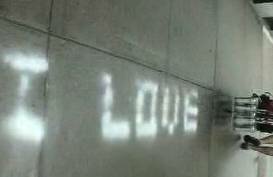
Cory Docotrow, on BoingBoing, writes:
jkinberg has invented a bicycle that doubles as a dot-matrix printer, huffing out low-resolution ASCII characters from an array of spraypaintchalk cans mounted on the bike’s rear and controlled by a Powerbook. He’s planning to make a bunch of them to spray anti-GOP messages during the Republican convention — he calls the project “Bikes Against Bush.” Link (Thanks, Poppy!)
Fri 18 Jun 2004
Posted by glenn under
Encryption
Cory Doctorow writes:
Alice wants Bob to buy Pirates of the
Caribbean from her. Bob will only buy Pirates of the Caribbean if
he can descramble the CSS-encrypted VOB — video object — on his
DVD player. Otherwise, the disc is only useful to Bob as a
drinks-coaster. So Alice has to provide Bob — the attacker –
with the key, the cipher and the ciphertext.
Hilarity ensues.
DRM systems are broken in minutes, sometimes days. Rarely,
months. It’s not because the people who think them up are stupid.
It’s not because the people who break them are smart. It’s not
because there’s a flaw in the algorithms. At the end of the day,
all DRM systems share a common vulnerability: they provide their
attackers with ciphertext, the cipher and the key. At this point,
the secret isn’t a secret anymore.
(more…)
Fri 18 Jun 2004
Posted by glenn under
Culture
Kevin Kelly writes:
A decade ago some community librarians in California initiated a great idea: why not lend tools as well as books? The idea slowly spread to a couple of dozen other US towns, but the most active and well-stocked tool libraries are still in the Bay Area — one in Berkeley, Oakland and San Francisco. The typical tool lending library offers basic hand tools, and a selection of garden, landscaping and construction tools. The hot items with waiting lists at the San Francisco Tool Lending Library (now in the middle of a move to a new location on Howard Street) are heavy duty power tools. The top four borrowings are: an electric jack hammer, a drain snake for clearing sewage lines, an electric weed wacker (the library only deals with electrical tools, no gas), and rotary impact drills. There are racks of shovels, rakes, stampers, crow bars, pliers, and the usual shop tools, but the Saws-alls, belt sanders, wet tile saws, and other not-so-often needed tools get the most rotation. Many of these occasional tools are what you might find at a tool rental shop; indeed anyone with a city library card — including contractors — can, and do, borrow tools for the maximum 3 days.
Lending tools, like planting trees, is unalloyed goodness. Tool Lending Libraries are a great idea that should be duplicated everywhere. The biggest cost is not the tools but the liability insurance for the power tools. Patrons are pretty good at returning things in good order — they want to be able to use ‘em again.
Check your local system to see if they have one up and running. If they don’t, start one. If you live in the Bay Area head for one [Oakland Tool Library, Berkeley Tool Lending Library, San Francisco Tool Lending Library]. (Thanks to Charlie Bremmer for the reminder.)
– KK
Fri 18 Jun 2004
Posted by glenn under
Science
Gregory Winer, on Kevin Kelly’s Cool Tools, writes:
Fresh2 makes fluorescent compact light bulbs coated with a titanium dioxide film. The fluorescent UV light causes a chemical reaction with the film, and the resulting oxidation eliminates odors. I know it sounds far fetched, but the things really work. I ordered a pair for my laundry room where I keep 3 cat litter boxes. Although I keep them clean, there has always been a persistent odor there. I replaced the room’s 60W incandescent bulb (which I kept on all the time) with this new Fresh2 40w fluorescent fixture (already liking the fact that I’m saving a little electricity). Within one day, the odors were completely eliminated. I now swear by these bulbs. The only problem — the air has to circulate around them. They work best in exposed sockets. Not necessarily the most attractive look.
A similar technology is being used in Japan on windows. In this application, exposure of the titanium dioxide to sunlight UV caused a reaction that effectively cleaned the windows of soot, grime, etc.
Fresh2 Compact Florescent Bulbs, $20 for 2, from Fresh2
Fri 18 Jun 2004
Posted by glenn under
Science

A new specie of fish is seen in this undated photo released June 17, 2004. Brazilian scientists have discovered a new species of fish related to the shark family that has been swimming the seas since the dinosaur age, a researcher involved in the project said on Thursday. The fish, which is a kind of chimaera, or ratfish, is about 12 inches to 16 inches (30cm to 40cm) long, has large, wing-like fins, a whip-like tail and exposed nerves along its body that help it navigate in the deep, dark waters where it lives.
(more…)
Wed 16 Jun 2004
Posted by glenn under
Internet
Agence France-Presse, via news.com.au, reports:
THE first ever computer virus that can infect mobile phones has been discovered, anti-virus software developers said today, adding that up until now it has had no harmful effect.
The French unit of the Russian security software developer Kaspersky Labs said that that virus - called Cabir - appears to have been developed by an international group specialising in creating viruses which try to show “that no technology is reliable and safe from their attacks”.
Cabir infects the Symbian operating system that is used in several makes of mobiles, notably the Nokia brand, and propagates through the new bluetooth wireless technology that is in several new mobile phones.
(more…)
Wed 16 Jun 2004
Posted by glenn under
Internet
Nick Farrell, The (UK) Inquirer, reports:
THE BRITISH inventor of the World Wide Web has received the first Millennium Technology Prize in recognition of his revolutionary contribution to humanity.
Sir Tim Berners-Lee was given a £663,000 cash award presented by Finland’s president, Tarja Halonen. The award is among the largest of its kind and was set up along the lines of the Nobel prizes.
His graphical point-and-click browser, “WorldWideWeb”, was the first and it was him that fleshed out HTTP and HTML codes.
According to the Scotsman the prize committee was impressed by Berners-Lee’s decision to never patent his contributions to the internet.
Berners-Lee who has always avoided the spotlight, said that if he had done that there would be lots of little webs, but not one big one.
Tue 15 Jun 2004
Posted by glenn under
Culture
Oliver August, The (Australian) Times, writes:
MONGOLIANS have been ordered to invent their own surnames, after generations of living with just one name on the orders of their former Soviet masters.
Hundreds, pondering what to call themselves, daily besiege a small office in the centre of their capital where identity documents are issued. Held back by armed guards outside, some opt for surnames like Seven Drunk Men that hint at Mongolia’s national pastime.
Others prefer to adopt the name of Genghis Khan, still the mightiest of Mongols, who now has 500 namesakes in Ulan Bator.
(more…)
Mon 14 Jun 2004
Posted by glenn under
General
via BoingBoing.net:
Disposable mobiles purchased specifically for the purpose of illicit sexual liasons. A Boingboing pal in the UK says reports of this odd social trend are legit — throwaway phones allow sekrit lovers to communicate by SMS or voice, on the downlow. Snip from the blog where [Xeni Jardin] first read the phrase “shag phone”:
I heard someone (honest) talking about their “shag phone” the other day. He was a married man having an affair with a lady who was also married. It seems that one of the first heady rituals of the affair was to purchase a “his and her” pair of Pre-pay shag phones.
Only they knew each other’s number, so when the phone rang, they could answer in an appropriately passionate way. While much the same effect could be achieved with caller recognition (assuming they were mobile literate), there was more than just a romantic gesture involved with this behavior. Technology still can’t hide your phone bill from a suspicious spouse. And it can’t hide your amour’s frequently dialed number from prying eyes. Better to get a pair pre-pay phones with no incriminating phone bills or records. A small example of how the mobile is impacting on 21st century life.
Thu 10 Jun 2004
Posted by glenn under
General
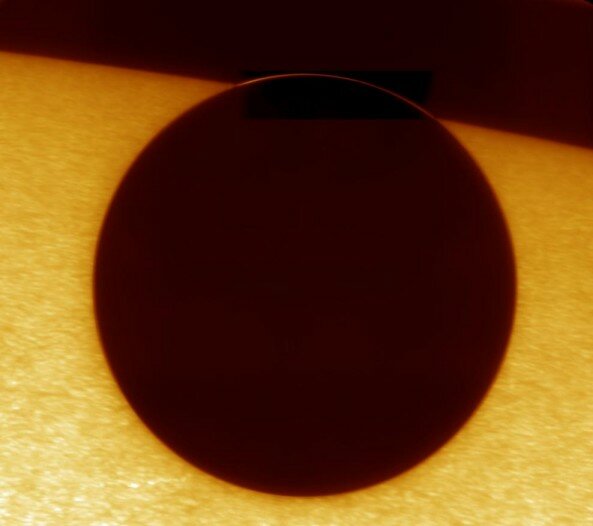
Astronomy Picture of the Day
With Venus in transit at the Sun’s edge on June 8th, astronomers captured this tantalizing close-up view of the bright solar surface and partially silhouetted disk. Enhanced in the sharp picture, a delicate arc of sunlight refracted through the Venusian atmosphere is also visible outlining the planet’s edge against the blackness of space. The arc is part of a luminous ring or atmospheric aureole, first noted and offered as evidence that Venus did posses an atmosphere following observations of the planet’s 1761 transit.
The image was recorded using the 1-meter Swedish Solar Telescope located on La Palma in the Canary Islands. For the Institute for Solar Physics, Dan Kiselman, Goran Scharmer, Kai Langhans, and Peter Dettori were at the telescope, while Mats Lofdahl produced the final image.
Excellent movies of the transit - including one of the emergence ofVenus’ atmospheric aureole - are available from the Dutch Open Telescope, also observing from La Palma.
Thu 10 Jun 2004
Posted by glenn under
General
Alex Steffen writes on WorldChanging:
 Under the right conditions, organic waste, from compost to sewage, can be processed to decay into slurry and biogas — fertilizer and fuel. Superflex is building biogas systems for small villages in Cambodia, Tanzania and elsewhere:
Under the right conditions, organic waste, from compost to sewage, can be processed to decay into slurry and biogas — fertilizer and fuel. Superflex is building biogas systems for small villages in Cambodia, Tanzania and elsewhere:
“Superflex has collaborated with Danish and African engineers to construct a simple, portable biogas unit that can produce sufficient gas for the cooking and lighting needs of an African family. The system has been adapted to meet the efficiency and style demands of a modern African consumer. It is intended to match the needs and economic resources that we believe exist in small-scale economies. The orange biogas plant produces biogas from organic materials, such as human and animal stools. For a modest sum, an African family will be able to buy such a biogas system and achieve self-sufficiency in energy. The plant produces approx. 4 cubic metres of gas per day from the dung from 2-3 cattle. This is enough for a family of 8-10 members for cooking purposes and to run one gas lamp in the evening.”
I remember hearing that back-to-the-land types in the 70s found biogas systems unstable and dangerous. Superflex claims to have solved these problems through “the innovation of a pressure equalisation system and a provocative new construction method and design” but I lack the background to say either way. Still, distributed biogas sounds like a great idea.
Thu 10 Jun 2004
Posted by glenn under
Internet

writes on Slashdot:
“The first war-sailing event ever, AFAIK. A community based WiFi network in Leiden, the Netherlands, WirelessLeiden hold a warsailing event [Dutch links]. The war-sailing event was meant to show that WirelessLeiden is more than just a local city network. On this map you can see that 75% of the route was covered by WirelessLeiden. Vic Hayes, the Father of WiFi, was a keynote speaker during the war-sailing event. He gave a talk about how WiFi was developed. A couple of spin-offs gave presentations, namely AnyWi and KoGeRo. FYI: WirelessLeiden [English Link] has rolled out a free WiFi network covering almost the whole city of Leiden, 100.000 inhabitants, 49 nodes with 30 more to be build this year. This is the NodeMap of WirelessLeiden.”
Wed 9 Jun 2004
Posted by glenn under
General
AP via The Sydney Morning Herald via arstechnica reports:
“Toxic dust” found on computer processors and monitors contains chemicals linked to reproductive and neurological disorders, according to a new study by several environmental groups.
(more…)
Wed 9 Jun 2004
Posted by glenn under
General
The Milwaukee Channel (WISN-TV; Ch. 12) reports:
MILWAUKEE, WI - A Milwaukee woman has died after accidentally dousing herself in lighter fluid.
Police said the woman, 31, was trying to throw the lighter fluid on her boyfriend to set him on fire, but ended up burning herself instead.
Her boyfriend had only minor injuries.
Police said the two were having an argument at their home on 18th and State Street.
During the incident the house caught fire.
(more…)
Wed 9 Jun 2004
Posted by glenn under Culture , Science
The (UK) Sun reports:
WIDOW (UK) - Lin Tandy will remember her geologist husband forever after having his ashes made into DIAMONDS.
She paid £6,750 to US firm LifeGem to turn them into graphite, which was polished into three yellow, ¼-carat gems.
Lin, 51 — whose hubby Brian died of a heart attack aged 56 — is having them set in rings for herself and her two daughters in Reading, Berks. She said: “I was amazed by their beauty.”
The Sun told last month how Catherine Hoare got Sussex-based LifeGem to make her pony’s ashes a diamond.
Wed 9 Jun 2004
Posted by glenn under
Culture
Xeni Jardin writes on BoingBoing:
I just got home from having coffee with a friend at my favorite cafe in West Hollywood. There’s a zany new age bookstore down the street. Sometimes I pop in for the sole purpose of sneering at book titles like Tantric Sex for Dummies and Is Your Pet Psychic?

But tonight was no ordinary night of snorting and hiding my face in the Feng Shui soy candle display. Tucked away on the shelf below that black velvet UFO portrait of The High ECK Master, I found Dancing With Catscle Books, 1999). Been around for years, but I’d never seen it before. Filled with pictures of humans fannying about in tights, striking “I-Wish-I-Were-Baryshnikov” poses — together with cats who doing the same thing. The text is rich. “Multicat” interspecies dance ensembles as a tool for enlightenment; think Busby Berkeley with hairballs and chakras.
Dig the pre-dance exercises:
(more…)
Tue 8 Jun 2004
Posted by glenn under
Science
Jo Twist, BBC News Online science and technology staff, reports:
A revolutionary kind of glass that needs little cleaning could mean soap and chamois are binned for good.
The Pilkington Activ glass has a special nano-scale - extremely thin - coating of microcrystalline titanium oxide which reacts to daylight.
This reaction breaks down filth on the glass, with no need for detergent. When water hits it, a hydrophilic effect is created, so water and dirt slides off.
(more…)
— Next Page »









 Under the right conditions, organic waste, from compost to sewage, can be processed to decay into slurry and
Under the right conditions, organic waste, from compost to sewage, can be processed to decay into slurry and 


